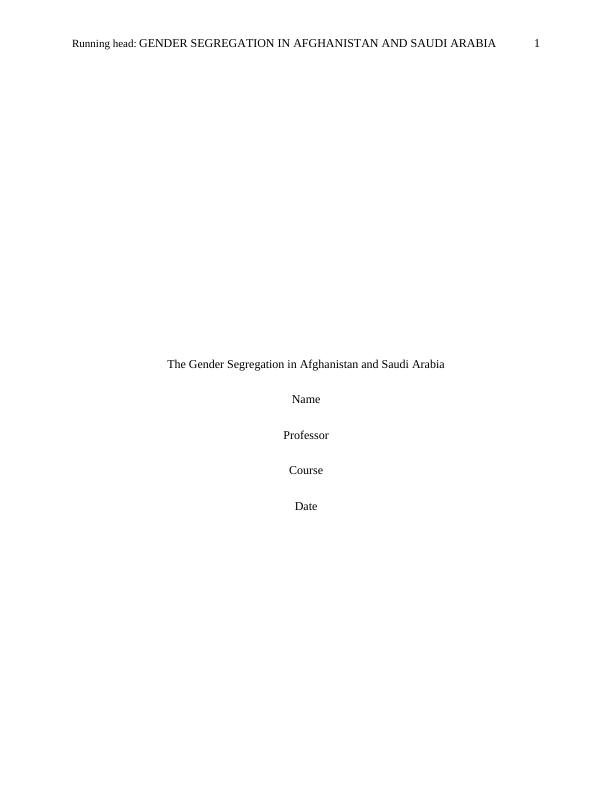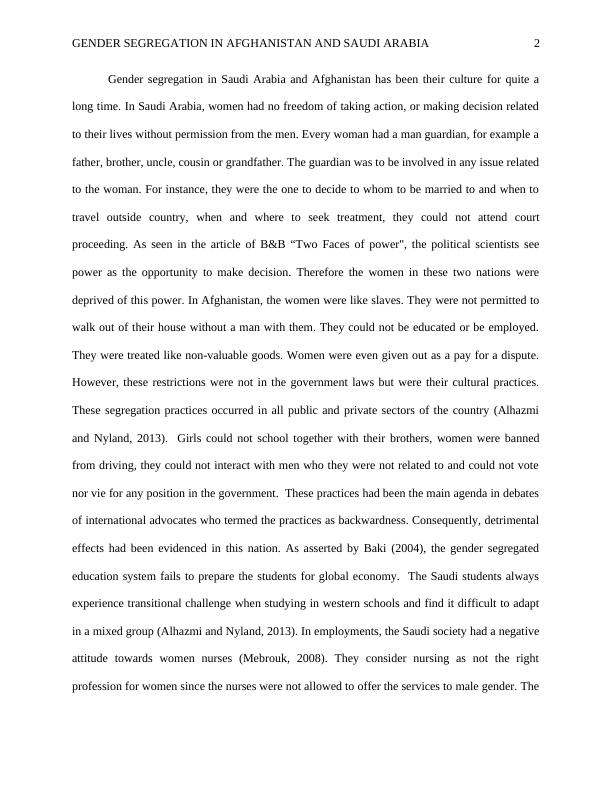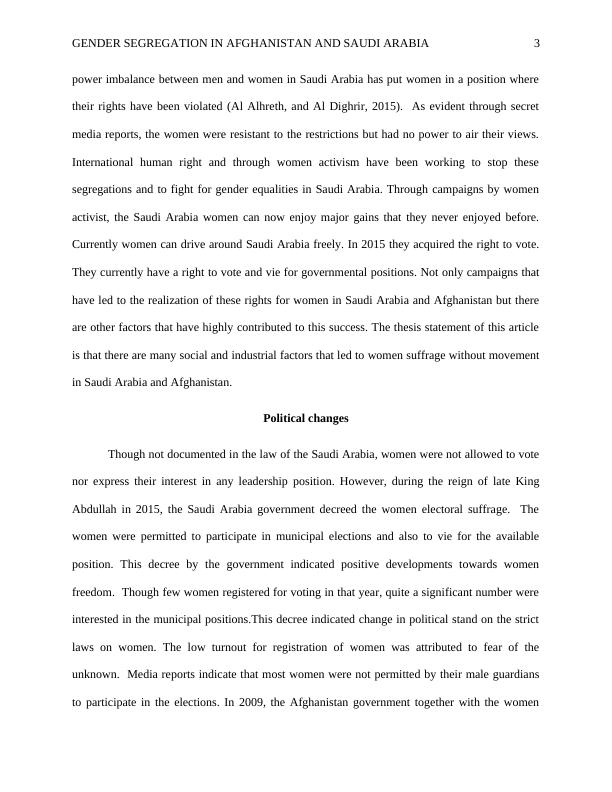Gender Segregation in Afghanistan and Saudi Arabia
This assignment explores the social and industrial factors that led to women suffrage in Saudi Arabia and Afghanistan, focusing on political changes and media's role in presenting the injustices faced by women.
7 Pages1880 Words192 Views
Added on 2023-06-12
About This Document
This article explores the cultural practices of gender segregation in Afghanistan and Saudi Arabia. It discusses the detrimental effects of these practices and the factors that led to women's suffrage without movement in these countries. The article also covers the political changes, media reports, and media coverage that have contributed to the realization of women's rights in these countries.
Gender Segregation in Afghanistan and Saudi Arabia
This assignment explores the social and industrial factors that led to women suffrage in Saudi Arabia and Afghanistan, focusing on political changes and media's role in presenting the injustices faced by women.
Added on 2023-06-12
ShareRelated Documents
End of preview
Want to access all the pages? Upload your documents or become a member.
Women's Rights Without Movement
|10
|2932
|43
Changing Perspectives on Gender
|12
|3480
|208
Sexual Discrimination in Nursing Schools
|5
|1109
|273
Women’s Education in Saudi Arabia and Iran
|6
|2416
|260
Sexism, Racism and Socialism: Understanding the Social Changes
|8
|1818
|377



